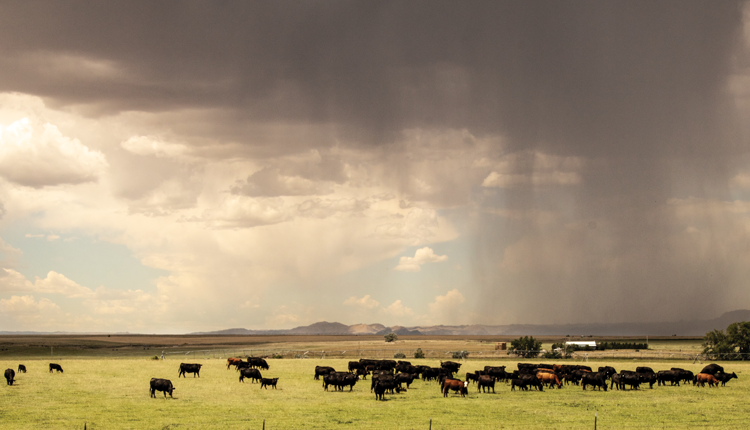Desertification and human-induced climate change |
| By Jim Gerrish |
|
|
The author is a rancher, author, speaker, and consultant with over 40 years of experience in grazing management research, outreach, and practice. He has lived and grazed livestock in hot, humid Missouri and cold, dry Idaho. It seems many people in the farming and ranching communities are still having a hard time coming to terms with the concept of climate change and what role human beings might play in this process. We speak of climate on different levels. The “macroclimate” describes continental or worldwide conditions, while “microclimate” describes localized conditions and situations. Microclimate may be what happens differently on a south-facing slope versus a north-facing slope. It can be even down to the level of what happens inside the hoofprint of a cow versus what happens outside of a hoofprint. I want to talk about the things falling in between the worldwide climate and a single cow hoof imprint. Let’s start with a look at the term “desertification.” The most commonly used definition of desertification is the process by which productive land becomes desert and is usually attributed to deforestation, inappropriate agricultural practices, and/or drought. Human-induced desertification has been taking place for thousands of years. A classic example of desertification is the degradation of ancient Mesopotamia, the so-called Fertile Crescent and Cradle of Civilization, into the deserts of modern Iraq, Syria, Jordan, and other regions of the Middle East. Other areas of Africa, Central Asia, Australia, and the American Southwest provide further examples of desertification. The fact that humans have caused these transitions of productive land to desert is well documented. I want to put forward another definition of desertification that is becoming more widely used and is more easily recognized by modern agriculturalists. The basic reality is that desertification is the loss of carbon from the soil. Those ancient lands that were once productive experienced massive carbon loss in response to the advent of tillage and overgrazing associated with the transition from nomadic herders to settled agriculture. It took a few thousand years for this process to happen. Since 1970, the annual rate of desertification worldwide has increased by 30% to 40%. As we have industrialized agriculture, our efficiency for land degradation has accelerated. In 2023 alone, about 30 million acres of land worldwide moved from a productive state to desert status. That is an area approximately the size of Pennsylvania being lost in a single year. How much longer can we stand this? Bringing it home I want to bring this down to a local level. If we accept that desertification is essentially the loss of soil carbon, we can see desertification happening under our own feet. Whether you live in Maryland, Missouri, or Montana, farming and grazing practices that reduce soil carbon on an ongoing basis are slowly but surely transitioning your farm or ranch toward a desert state. Do I expect that Missouri is going to look like Arizona next year? Obviously not! Change does not come that fast. What we do see is declining productivity in individual pastures on individual farms, even in high rainfall environments. Many times, I hear a farmer or rancher say they just don’t get the rain they used to. Is that reality or perception? Most of the Midwest has become somewhat wetter in terms of total precipitation received over the last 100 years. Many of these specific locations where I hear farmers and ranchers talk about increasing drought are actually receiving ample rainfall. The problem comes from poor infiltration and reduced water storage capacity in the soil. Both of these failing water cycle functions are the result of declining soil carbon levels. We are creating our own localized droughts through the ongoing process of microclimate desertification. When enough of our neighbors experience the same sort of land degradation, then we begin to see the broader effect of reduced precipitation and wider spread desertification taking place. With a large area holding less water, the relative humidity of that area begins to decline, and we do in fact see a reduction in annual rainfall. There is a fix The flip side of that process is that as more and more of us and our neighbors implement strategies that boost soil carbon levels, we begin to reverse the flow of desertification at the local level. Ultimately, that results in greater amounts of precipitation across our region, and we maintain the health and productivity of our landscape. Whether or not you choose to believe that human-induced climate change is real, I do not think anyone can dispute the simple fact that adding more carbon to our soils can and will improve the health and productivity of a farm or ranch. The key point we need to understand is that climate change is not causing desertification. It is the desertification process that is driving climate change. Addressing climate change is the matter of addressing soil carbon loss at our own local level. This article appeared in the April/May 2024 issue of Hay & Forage Grower on page 13. Not a subscriber? Click to get the print magazine. |
